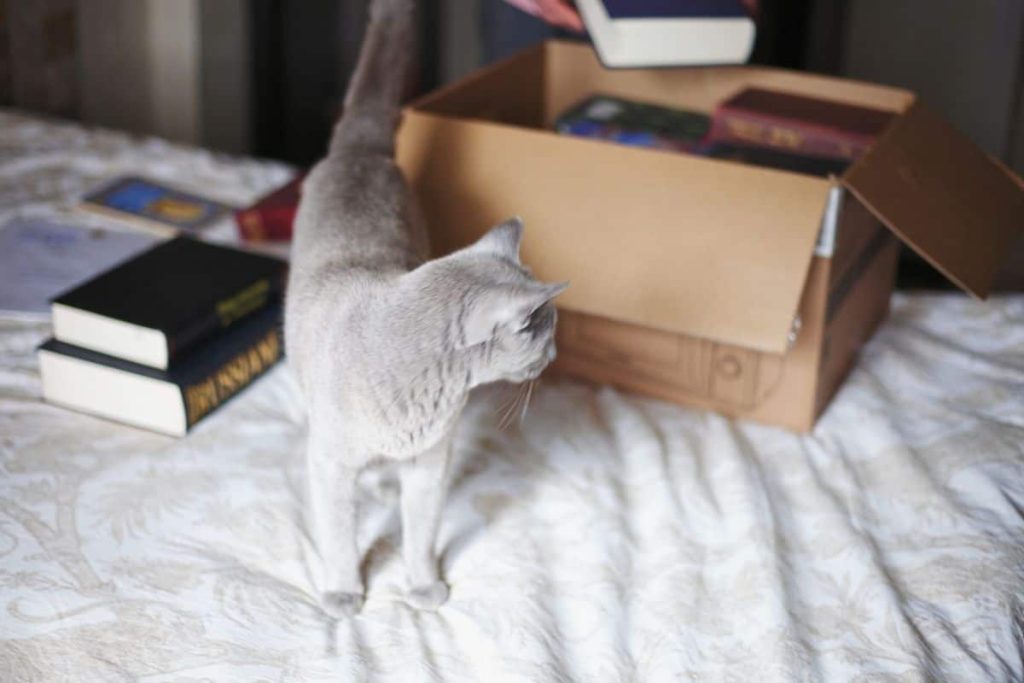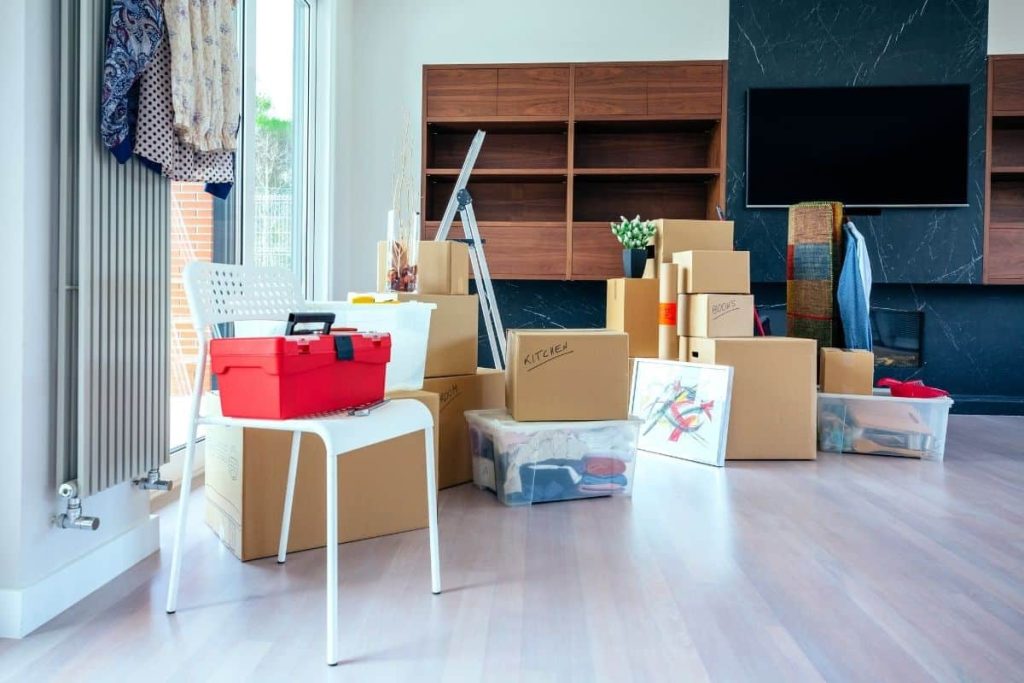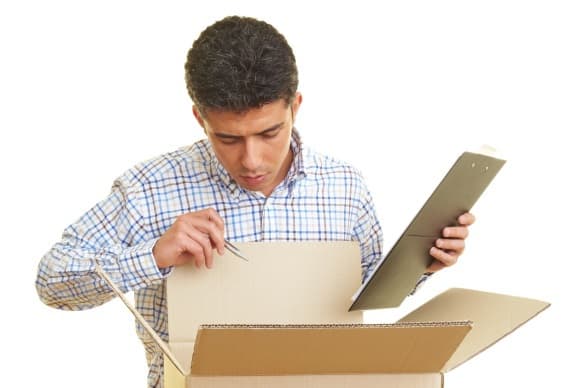Updated for 2023
Cassidy’s, Arnprior’s expert moving company, makes packing look glamorous and exciting.
In reality? Well…

Free Ultimate Moving Checklist
Say goodbye to moving stress with our 2025 residential moving checklist for Canada—it’s the ultimate time-saver!
Download NowWe might make it look easy, but guys – packing is hard work and takes a lot of strategic thought. Whether you’re looking for local Ottawa mover or a Canada long-distance mover, there are a lot of questions to ask. We suggest getting a moving checklist to be best prepared.
If you aren’t a pro packer, you’ll want all the help you can get. Regardless of whether you’re moving in the spring, summer or winter, Kanata’s #1 moving company has all the packing tips for moving you need, but if the moving process is looking like too much of a project, we can help with that too.
Where and When to Start Packing

The 2 things you ask yourself as you stare at all your stuff (most of which you swear you’ve never seen before and couldn’t possibly be yours) are:
- When do I absolutely, positively have to start this?
- Where oh where do I start?
After 100 years of trusted Barrhaven moving and packing, we have some insight into the topic.
Start Early
Do you know how the early bird gets the worm?
Well, the early packer gets way less stress and the satisfaction that procrastination didn’t win this time. Especially if you’re planning on a long distance move, like moving to Calgary.
For the average 3-bedroom home, you could spend 3-4 full days packing. That’s assuming there are no delays and you have all your packing tools.
Most people have no idea it’ll take that long – and then they run into problems.
The earlier you start packing, the better it will be. You can start months before if you want.
Anything you won’t be using before your move can be packed. This includes:
- Seasonal items
- Guest rooms
- Basements
- Good china you only use on holidays
- Anything you don’t use, but can’t get rid of because of all the memories
Of course, sometimes you have no other choice but to pack right before you move. We do have some tips for how to pack and move in a hurry.
Start Anywhere – Just Don’t Leave the Kitchen to the End
As our Pontiac movers have said, you should start in the areas you aren’t actively using. This will minimize the disruption to your day-to-day routine.
If you take anything away from this article, let it be this: don’t leave your kitchen to the last minute.
Kitchens take the longest to pack, mostly due to all the breakables and appliances that need to be properly protected. In particular, you want to make sure you pack your glasses and dishes carefully to keep them in one piece.
Leave it to the end, and suddenly it’s 11 PM the night before the truck arrives. You’re still wrapping plates with Netflix running on your computer, asking if you want to watch another episode, knowing you still have a cupboard of glasses and the pots and pans to go.
How to Start Packing

Now that you have a good idea of the when and where you need the how-tos. Whether you’re packing in a hurry or ahead of schedule, it’s important to follow these steps.
1. Have a Designated Packing Zone
Make a zone and claim it as your own.
Having all of your packing materials spread all over the house is going to waste your time, and make it super frustrating when you really need the tape.
Whenever, wherever, and whatever you’re packing, have a space where you can grab what you need and not have to go searching. Empty spaces are in short supply once drawers and closets are being emptied so claim your space before packing and moving begins.
Your packing zone can move as you move between rooms. Claim a corner, a counter, or even a whole empty room. Just make sure your zone is well-stocked with packing supplies like tape, markers, and boxes.
2. Label Your Boxes
This isn’t Deal or No Deal. You want to know what’s in each box.
Get a batch of markers – good ones – and label every box on both sides with the following information.
- What room does it belong in
- The exact contents
- Whether or not it’s fragile (mirrors for example)
- What side needs to be up
Trust us: you are going to be so happy you did this on moving day. Box labelling is what makes the unpacking process easier on you- as your reliable Stittsville moving company can make sure the boxes go straight to the correct rooms in your new house.
3. Get Moving Boxes – Really, Really Good Ones
Before you can label your boxes, you need to get some.
You might be tempted to scour the neighbourhood for cheap – or free – cardboard boxes thinking you’re saving money.
But those flimsy cartons will collapse on you, and your belongings.
Invest in boxes that are designed for residential moving. They’re custom-made to handle anything homeowners can put in them.
Make sure to have different size boxes, as your most important moving tool having a good mix of smaller boxes and larger boxes will make the packing process a bit easier- using the small boxes for heavier items and large boxes for lighter items. If you have only large boxes, you’ll end up filling free space with bunched-up paper and waste packing material as well as space in the mover’s moving truck vs. a U-Haul.
4. Don’t Pack What You Don’t Need
If you don’t need it, there’s no sense in packing it.
So take a good, hard look at all your belongings. Decide whether you’ll keep it, donate it, or toss it.
Our Pembroke movers have more in-depth guides on how to make these difficult decluttering decisions before a move >
5. Resist the Reminiscing
It’s incredibly easy to find an old toy or photo album and get lost down Memory Lane.
As Gatineau’s trusted moving company, we’ve been there – and that’s why we know you shouldn’t.
Taking the time to reminisce over every item you own is going to eat up your time.
You’ll be begging for that time when you’re stuck scrambling to finish packing the night before you move. If you take anything from our tips and tricks, this will make all the difference: Save time by skipping the detour down memory lane.
Our professional Pontiac, Quebec movers recommend saving it for when you’re unpacking – and you’ve got time on your side.
6. Make a Do NOT Pack List
Everyone needs a moving day survival kit.
You know, the things you need to have easy access to and feel like a put-together human being. This includes your toothbrush, toiletries, changes of clothes… toilet paper.
First, make a list of things you’ll need in your kit.
Next, pick a box, suitcase, or other receptacles that will serve as your survival kit. Make sure it’s clearly labelled and NOT packed in the truck with the rest of your belongings. This should stick with you. Keep it nearby in the packing process as you’re sure to think of more items along the way.
7. Create Your Very Own Set Up Kit
Similar to your moving day survival kit, or Batman’s toolbelt, you’ll want a kit of tools that will help you set up your new home. This includes:
- Hammer
- Nails
- Screwdriver
- Screws
- A drill
- A drill battery pack and plug
- Allen keys
Anything you think you’ll need to put together bed frames, reassemble chairs, or just get your house in order.
Again: pack it, label it, and keep it somewhere you can easily reach it.
8. Go Room by Room
Okay: it’s crunch time.
At some point, you’re going to have to go on a bit of a packing spree. We’re talking at least a few days of efficient packing. This is going to cover all the stuff you’re using right up until the last few days.
Our advice? Go room by room, and pack as much as you can. And check everywhere for things you may have left behind. The backs of closets, under bed frames, in the cabinet above the fridge you never open. Everywhere.
Our advice? Go room by room, and pack as much as you can. And check everywhere for things you may have left behind. The backs of closets, under bed frames, in the cabinet above the fridge you never open. Absolutely everywhere.
What About Tips to Make Packing Easier?

You didn’t think that was the end of our wisdom, did you?
9. Assemble the Team
The team is your bubble wrap, boxes, packing tape, crushed paper, packing peanuts, scissors, markers – anything you need to make packing a success.
Get them early, and organize them in your aforementioned packing zone.
10. Only Use Packing Containers That Can Be Sealed
It’s tempting to use laundry hampers and trash bags as makeshift moving materials, but it’s not a good idea.
Bags that can easily split, or containers without lids can easily leave you with a huge mess on moving day. And the last thing you need on moving day is to have to stop and… re-pack.
11. Don’t Undress Your Dresser
Guess what?
Your clothes are already half-packed, thanks to your dresser! Go on, take a moment: do the happy dance.
For simple moving, take the drawers out and use a protective wrap. This way one person can easily move them and gives you a break from the packed boxes for a minute.
12. Heavy Stuff Goes On the Bottom
Packing is an art. There’s a process and proper order.
Heavy stuff on the bottom, light items on top. Keep fragile items together in their own box. No amount of packing paper will protect your grandmother’s vase from your cast-iron pan.
It’s exactly like bagging your groceries. You don’t want to crush your light items, and the heavy items will help hold the boxes right side up.
13. Set a 50 lbs. Limit Per Box
Speaking of heavy items…
The last thing you want to do on moving day is hurt yourself. Or hurt your friend who graciously volunteered to help.
Each box should weigh no more than 50 lbs. This is a safety issue, one we take very seriously.
If you have extremely heavy items to move like gym equipment, they should be packed alone and in small boxes to limit the weight. If anything looks like it’s going to be too heavy to lift on your own, ask for help.
14. Have a Stack of Newsprint On Hand
Newsprint is great for wrapping around your breakables.
It adds an extra barrier, and when coupled with the right packing materials, it’s super handy.
When you get your newsprint, make sure it’s easily accessible in your packing zone.
15. Put Small Items in Small Bags Before You Pack
Every homeowner has some really small items you’d lose if they weren’t kept in another larger container. I.e. pencils, paper clips, or screws.
If you have teeny-tiny items to bring with you, group them together and put them in small sealable bags first. By pre-packing them, they’ll be easy to find when you’re unpacking.
16. Play Tetris with Your Belongings
Never been good at Tetris? Don’t worry: there’s no time limit in this particular game.
When you’re packing, you should leave no spaces in your moving boxes. Space gives your possessions more room to rattle around and potentially break. Space also increases the risk of crushing.
Make use of every available nook and cranny by using packing materials or soft objects like your clothes to fill spaces between bigger, more rigid items. Use packing paper only when you absolutely can’t fit anything, or the box is almost full and adding more will make it too heavy.
17. Seal Any Spill-Risks with Tape and Plastic
Spill-risks include:
- Soaps
- Shampoos
- Dry goods
- Oils and liquids
These should be sealed with tape, placed in a plastic bag, then packed into a box clearly labelled. Remember to indicate which side is up.
18. Learn What You Absolutely Cannot Pack
There are some things you cannot pack in a residential moving truck. This includes:
- Hazardous materials
- Perishables
- Chemicals
For a more exact list, check out this what not to pack guide >
19. Bundle Long Items Together
If you’re taking your curtain rods, or you have rakes, brooms, and long-handled dusters, these should be bundled together with tape and plastic wrap.
20. Pack Lamps and Lamp Shades Separately
Together, lamps and lampshades are awkward to pack and pretty fragile.
Separately? Still fragile (so make a note) but much easier to work with.
First, remove the light bulb. Then, remove the shade and the metal ‘U’ that holds up the lampshade.
The base of the lamp should be wrapped in paper and placed upright in a box, surrounded by crushed paper. Do the same thing with the metal ‘U’.
The lampshade should be carefully wrapped and placed upright in its box. If you have multiple shades, they can be nested inside each other.
21. Treat Dishes and Glasses with Extra Care
Dishes and glasses are in a league of their own in the packing world.
They need their own specialized boxes (we’ve got them).
A layer of crushed paper should be at the bottom of the box, between each layer in the box and at the top of the box.
You can find more in-depth instructions here on packing dishes>
22. Get a Mattress Bag
Mattress bags are the super cool packing product you didn’t know existed.
But now that you do, we’re guessing you really want one. Because if you’ve ever moved before, you know how much of a pain it is to move a mattress and keep it clean.
23. Use the Boxes Your Electronics Came In
You were being really smart when you forgot to toss the boxes your electronics came in.
These boxes were custom made for your device, and that makes it super easy to pack and move them.
If you didn’t keep the boxes? That’s completely fine! There are tons of ways you can safely pack your electronics >
We’ll Help with as Much as You Want
Not cut out for packing? We aren’t just here for the moving tips, Cassidy’s is a full-service moving company that will pack for you. If these packing tips have just overwhelmed you as you realize how big of a job awaits, we offer more than just a moving truck- we are a full-service moving company including a storage unit if needed.
We offer customizable moving quotes that take into account what you want. We could simply help you with your local Ottawa move, we could help you pack, or we could help with it all. The choice is up to you.
Whenever you’re ready to get packing, talk to us about the moving. We’ll give you a free, no-obligation quote based on our knowledge and experience. We are the moving company people trust for their local and long-distance moves- find out for yourself!

